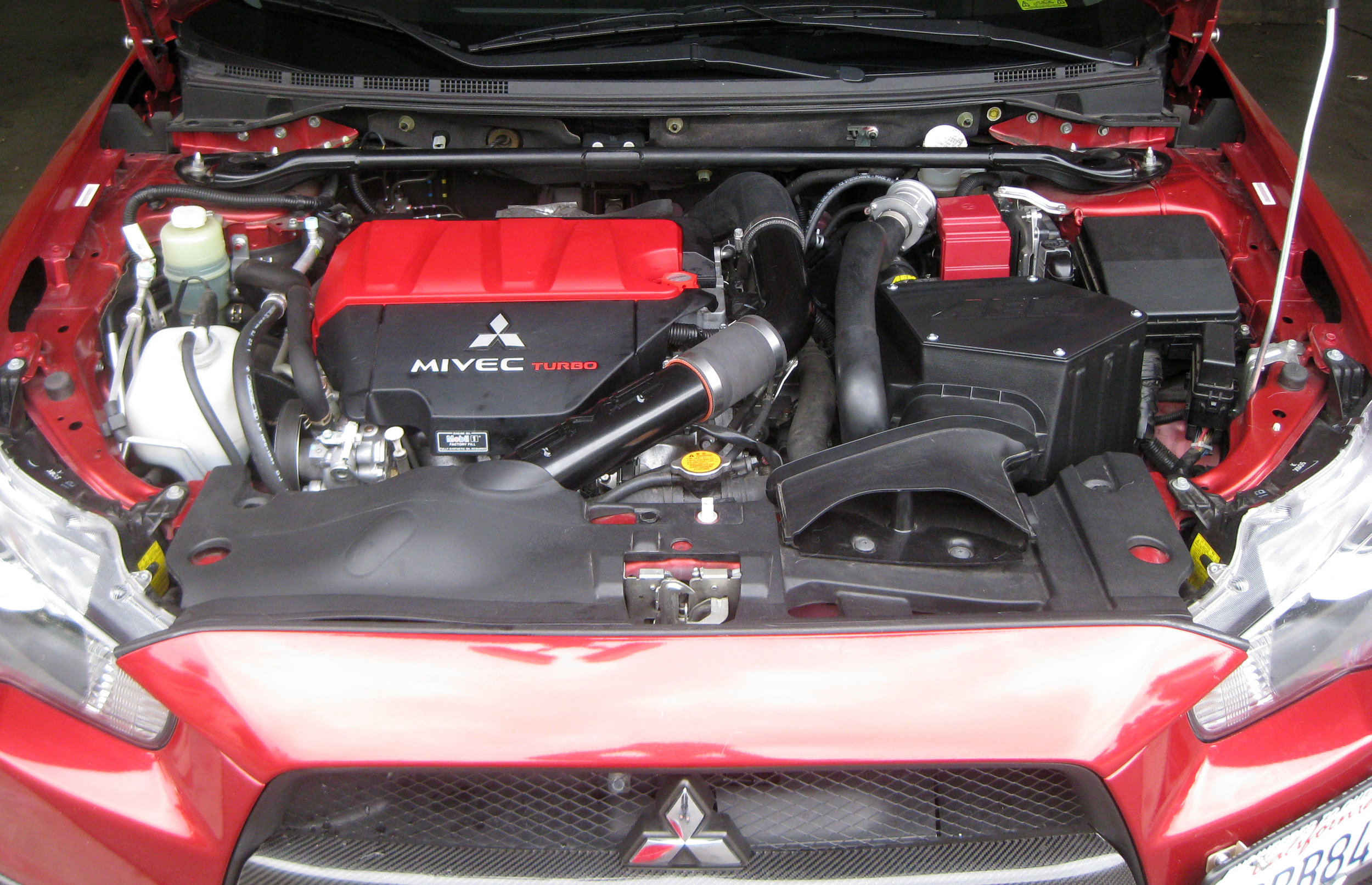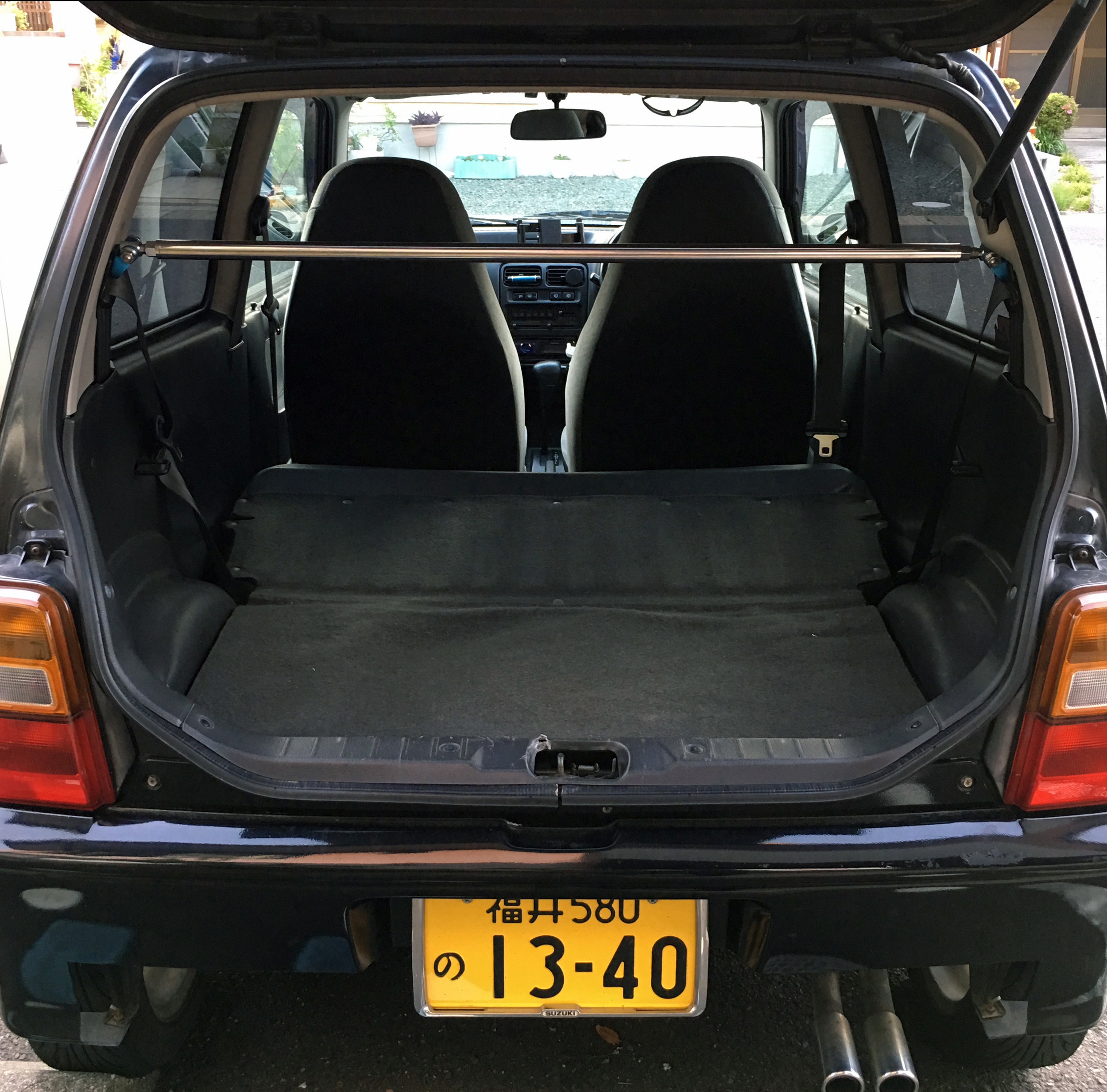[ Alto Works ] Performance Bracing, Part 1
Let’s not deny it. The stiffer, the better. Generally speaking, the older stuff tends to be floppier, looser, and less stiff than the newer models. Double entendres aside, we’re talking about car chassis stiffness, of course.
So why is a stiff car really that great? Perception is everything. Really. Barring other extraneous factors, an old car like my Alto Works with body bracing in the right areas will feel much better than one without it. The perceived solidity of body motions encourages harder driving at the limits, faster transitions, and stability on all surface conditions. A skilled driver can more than compensate for a loose car, certainly. But for an average driver like me, I can put more faith in a car that behaves responsively when pushed.
Older cars are often floppy messes compared to their more modern counterparts. Check the differences between the first VW GTI and their modern variants, and you will find the chassis stiffness has improved immeasurably, among many other things. Even your average 80s/90s Honda Civics can’t compare to a basic Honda Fit in terms of body rigidity. On every bump, turn, and curve in the road, you can feel chassis flex on an old car, even with new shocks/struts and suspension bushings. Look no further than an early 90s stock Mazda Miata Roadster NA6 if you really want to feel body motions.
Moreover, between hatchbacks and sedans, sedans tend to have greater body rigidity than hatchbacks. For a good old-school example, look into the Toyota AE86. The “3-door” hatchback had noticeably more flex than the “2-door” coupe variant, according to many experts familiar with both. The hatchback has more open space and less body bracing that a sedan/coupe has at the rear trunk, leading to less stiffness. Essentially, at its most basic, the area rear of the firewall is a box. A box without additional bracing can easily be twisted torsionally.
The Alto Works fits that image of a box absolutely perfectly. The passenger and trunk area is a huge, open box. Great for maximizing storage and passenger space, terrible for rigidity. That means a lot can be done to improve the performance.
Even though the car is 20 years old, there are still plenty of aftermarket companies producing performance bracing parts and quite a few second-hand, good condition parts, as well. A quick search yields a range of basic things like strut tower bars to various cabin bars, fender bars, and under carriage bars. Finally, there is the nearly almighty roll cage, which ties down the cabin area with at least 4 points of huge steel, chromoly, or aluminum tubing, producing unbelievable chassis rigidity at the cost of space, comfort, practicality, and a lot of yen.
As my path is simply starting out and my budget limited, I settled on my first chassis upgrade, a simple rear pillar bar to add additional stiffness to the loosest part of the car, near the rear hatch. There are several designs of this item from several manufacturers, but I found these used items at a solid price of about 6000¥ ($55 USD) shipped. (The other bar is a Lateral Roll Bar, which I'll discuss later.) Not much to lose if I give it a shot.
This bar uses the existing upper rear passenger seat belt bolts, threaded directly into the chassis, crossing the space close to the middle of the rear open hatch area. Theoretically, it should offer a significant benefit to the overall rigidity, particularly during corner transitions and mid-corner bumps.
The installation went by smoothly, with the exception of me dropping a few of the factory M6 bolt shims, lost behind the plastic panels, despite me removing half of the panels off in search of them. Fine, a trip to the hardware store resulted in some new stainless shims.
Once installed, I definitely noticed a small difference immediately on some bumpy, poorly-maintained roads near my home. The squeaky, shifty rear changed to a bit more solid thumps on those bumps and curves. While it was far from dramatic, I think it definitely helped quite a bit.
Yes, I know some people will claim a placebo effect and I admit there may be a degree of it. However, the benefit in my Swift Sport of a Laile rear pillar bar, which was much thicker, yielded significantly less benefit. The body and floppiness of this Alto Works is certainly apt to benefit from these such modifications more.
Another side benefit of this modification is I now have a rear clothes hanger, in case I ever need a drying rack in my car, like when I go swimming in the summer...
I'm joking, of course. But my supervisor did call it a clothes hanger. I'm not offended, because, well, that's what I called them when I saw Civic EGs and EKs with those bars back in the day...
This won’t be the last time we’re gonna broach this topic, I can assure you. The search for a rock-hard chassis will continue. Lucky you.













